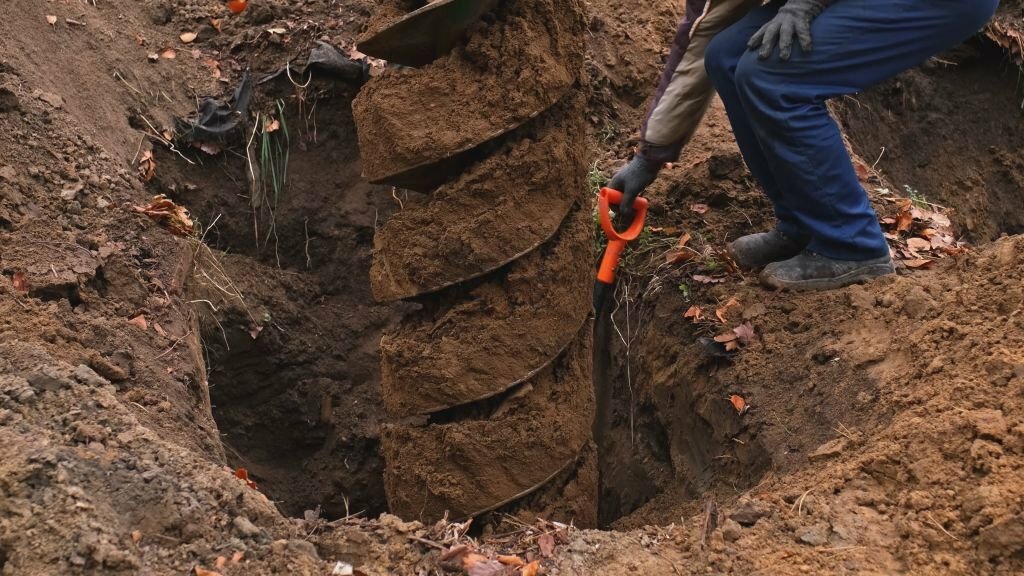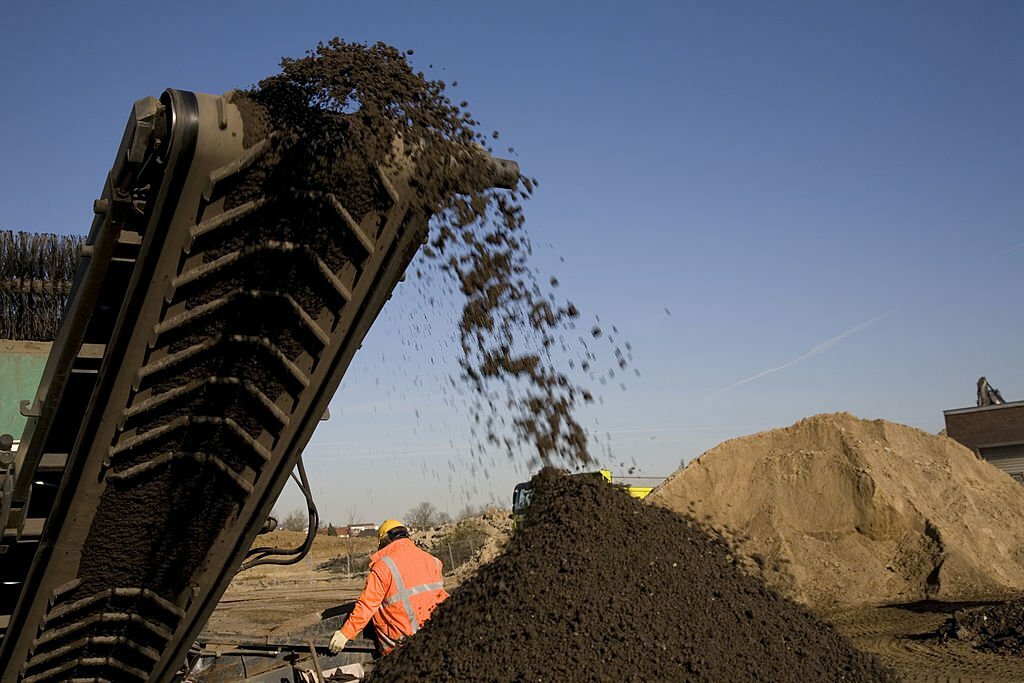
In the dynamic world of heavy equipment used in mining, safety is paramount. Mining drills, essential for extracting valuable resources from the earth, are equipped with a myriad of advanced safety features. These features not only safeguard the operators but also contribute to the overall efficiency and reliability of the mining operation.
Automated Control Systems
In the realm of contemporary mining, the integration of sophisticated automated control systems within modern mining drills stands as a testament to technological advancements reshaping the industry. These systems transcend the conventional, serving as more than mere efficiency enhancers. Operating at the forefront of cutting-edge technology, automated control systems play a pivotal role in mitigating potential hazards and accidents in mining operations.
The essence of these automated controls lies in their ability to orchestrate drilling operations with unparalleled precision. By doing so, they significantly diminish the risk associated with human errors, offering a safeguard against potential mishaps that could jeopardize both personnel safety and operational integrity. The drills’ automated features not only streamline processes but also introduce a layer of reliability that is fundamental in the unpredictable and challenging terrains characteristic of mining sites.
Moreover, these systems contribute to the optimization of resource utilization, ensuring that every drilling operation is executed with maximum efficiency. As technology continues to evolve, the symbiotic relationship between automation and safety in mining drills is expected to further redefine industry standards, fostering a future where precision, reliability, and safety seamlessly converge for a more sustainable and secure mining landscape.
Collision Avoidance Technology

Mining sites, marked by their intricate and demanding terrains, necessitate innovative solutions to navigate the complexities inherent in these environments. Recognizing this, modern mining drills are equipped with state-of-the-art collision avoidance technology, a critical component in ensuring both the safety of operators and the integrity of the mining operation. This advanced technology goes beyond conventional safety measures, utilizing a combination of sensors and cameras that operate in real time.
The collision avoidance systems act as vigilant guardians, detecting obstacles in the drill’s path and promptly relaying this information to operators. Through timely warnings, operators are empowered to make informed decisions, proactively avoiding potential collisions. What sets this technology apart is its ability to transcend mere alert systems. In certain instances, these cutting-edge systems go a step further by automatically adjusting drilling parameters. This dynamic response ensures not only the prevention of collisions but also the optimization of drilling processes in real time, a crucial feature in environments where the topography is as unpredictable as it is challenging.
As mining technology continues to advance, collision avoidance technology remains a linchpin in the commitment to fostering safer, more efficient, and technologically adept mining practices. The integration of these systems stands as a testament to the industry’s dedication to pushing the boundaries of safety and operational excellence in the face of complex terrains.
Emergency Stop Mechanisms

In environments fraught with high risks, the swift and decisive halting of operations during emergencies is paramount. Mining drills, recognizing the intrinsic hazards of their operational settings, come fortified with advanced emergency stop mechanisms. These mechanisms empower operators with the capability to instantaneously cease drilling activities in response to any unforeseen situation or potential danger.
This rapid response capability is not merely a feature but a critical instrument in the prevention of accidents and the assurance of on-site personnel safety. The immediate cessation of drilling activities in the face of emergencies underscores the commitment to prioritizing the well-being of those on-site, highlighting the indispensable role of these advanced emergency stop mechanisms as a safeguard in high-risk mining environments.
Dust Suppression Systems

Mining operations frequently generate substantial amounts of dust, presenting not only health risks to workers but also potential hindrances to equipment performance. The airborne particles pose challenges to respiratory health and can compromise the efficiency of machinery, making it imperative to address this issue proactively. In response to this concern, modern mining drills are equipped with advanced dust suppression systems.
These systems are designed to efficiently minimize the dispersion of airborne particles, thereby fostering a healthier work environment for on-site personnel. Simultaneously, by mitigating dust-related challenges, these systems contribute significantly to maintaining the longevity and optimal functionality of the mining equipment, ensuring sustained performance throughout the operational life of the drills.
Operator Training and Monitoring Systems
The paramount importance of operator training and vigilance cannot be overstated in the context of maintaining a secure working environment within mining operations. Acknowledging this, mining drills are equipped with sophisticated operator training and monitoring systems, elevating safety standards to new heights. These systems operate as a dual-purpose tool, offering real-time feedback on operator performance while fostering a culture of continuous improvement.

The operator training and monitoring systems play a pivotal role in ensuring that operators are not only well-versed in best practices but also consistently adhere to safety protocols. Real-time feedback mechanisms provide operators with immediate insights into their performance, allowing for prompt adjustments and corrections. By promoting adherence to established safety guidelines, these systems act as a proactive safeguard against potential risks and hazards.
Beyond their role in immediate safety, these systems contribute to a culture of continuous improvement through in-depth performance analysis. Regular assessments and feedback enable operators to refine their skills, addressing any areas of concern and enhancing overall efficiency. This iterative process not only fortifies the safety measures in place but also ensures that operators are equipped with the knowledge and skills needed to navigate the dynamic and challenging conditions of mining operations successfully. In essence, the integration of operator training and monitoring systems reflects a commitment to fostering a safety-conscious environment while promoting a culture of excellence and ongoing improvement within the mining industry.
Environmental Monitoring Sensors

Mining drills, in their contemporary design, extend their responsibility beyond ensuring human safety to include the safeguarding of the environment. A critical component of this environmental stewardship is the integration of sophisticated environmental monitoring sensors into the drills. These sensors serve as vigilant custodians, tasked with detecting and assessing any potential harm to the delicate balance of surrounding ecosystems.
Covering a spectrum of environmental parameters, these sensors are adept at monitoring air quality, ensuring that the emissions from drilling activities remain within permissible levels. Additionally, they play a crucial role in assessing ground stability, providing insights into potential disruptions that could have ecological repercussions. By actively engaging in real-time monitoring, these environmental sensors contribute significantly to responsible and sustainable mining practices.
The incorporation of such advanced sensor technologies not only aligns with regulatory requirements but also reflects a conscientious approach to environmental conservation. It positions mining operations as partners in sustainable resource extraction, emphasizing the need to balance industrial progress with ecological preservation. In essence, the integration of environmental monitoring sensors into mining drills underscores a commitment to responsible environmental management, ensuring that the impact of mining activities is not just minimized but actively monitored and mitigated for the long-term health of our ecosystems.
In conclusion, the safety features incorporated into mining drills used in heavy equipment go beyond basic precautions. They represent a commitment to creating a secure working environment for operators, preventing accidents, and promoting sustainable mining practices. As technology continues to advance, these safety features will evolve, further enhancing the overall safety and efficiency of mining operations.

